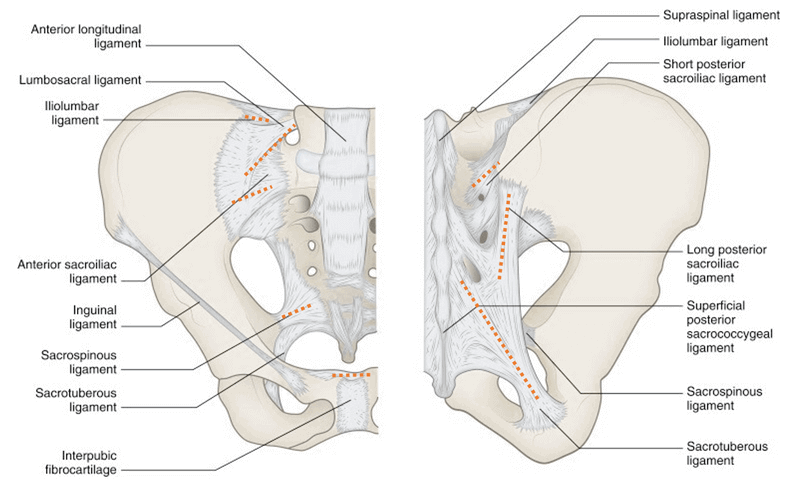Inherent stability of the pelvis is provided by ligaments. The 3 groups of ligaments are:
1. Sacrum to Pelvis:
Sacroiliac ligamentous complex: is divided into posterior (short and long) and anterior ligaments. Posterior ligaments provide most of the stability.
Sacrotuberous ligament: runs from the posterolateral aspect of the sacrum and the dorsal aspect of the posterior iliac spine to the ischial tuberosity.
Sacrospinous ligament: is triangular, running from the lateral margins of the sacrum and coccyx and inserting on the ischial spine.

2. Pubis to pubis: Symphyseal ligaments
3. Lumbar spine to pelvic ring: Provides additional stability
Iliolumbar ligaments: originate from the L4 and L5 transverse processes and insert on the posterior iliac crest.
Lumbosacral ligaments: originate from the transverse process of L5 to the ala of the sacrum.
Transversely placed ligaments: resist rotational forces
- Anterior sacroiliac ligament
- Short posterior sacroiliac ligament
- Iliolumbar ligament
- Sacrospinous ligament
Vertically placed ligaments: resist vertical shear forces
- Long posterior sacroiliac ligament
- Sacrotuberous ligament
- Lateral lumbosacral ligament
Injured ligaments of the pelvis determine relative contributions to pelvic stability:
- Symphysis alone: pubic diastasis <2.5 cm
- Symphysis and sacrospinous ligaments: >2.5 cm of pubic diastasis (rotationally unstable)
- Symphysis, sacrospinous, sacrotuberous, and posterior sacroiliac: unstable vertically, posteriorly, and rotationally